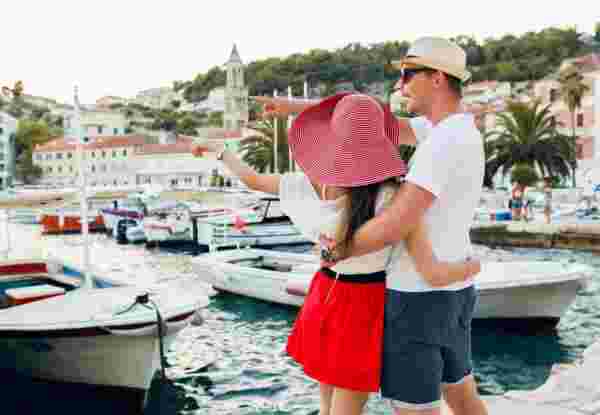NAXOS: Queen of the “unbeaten track”
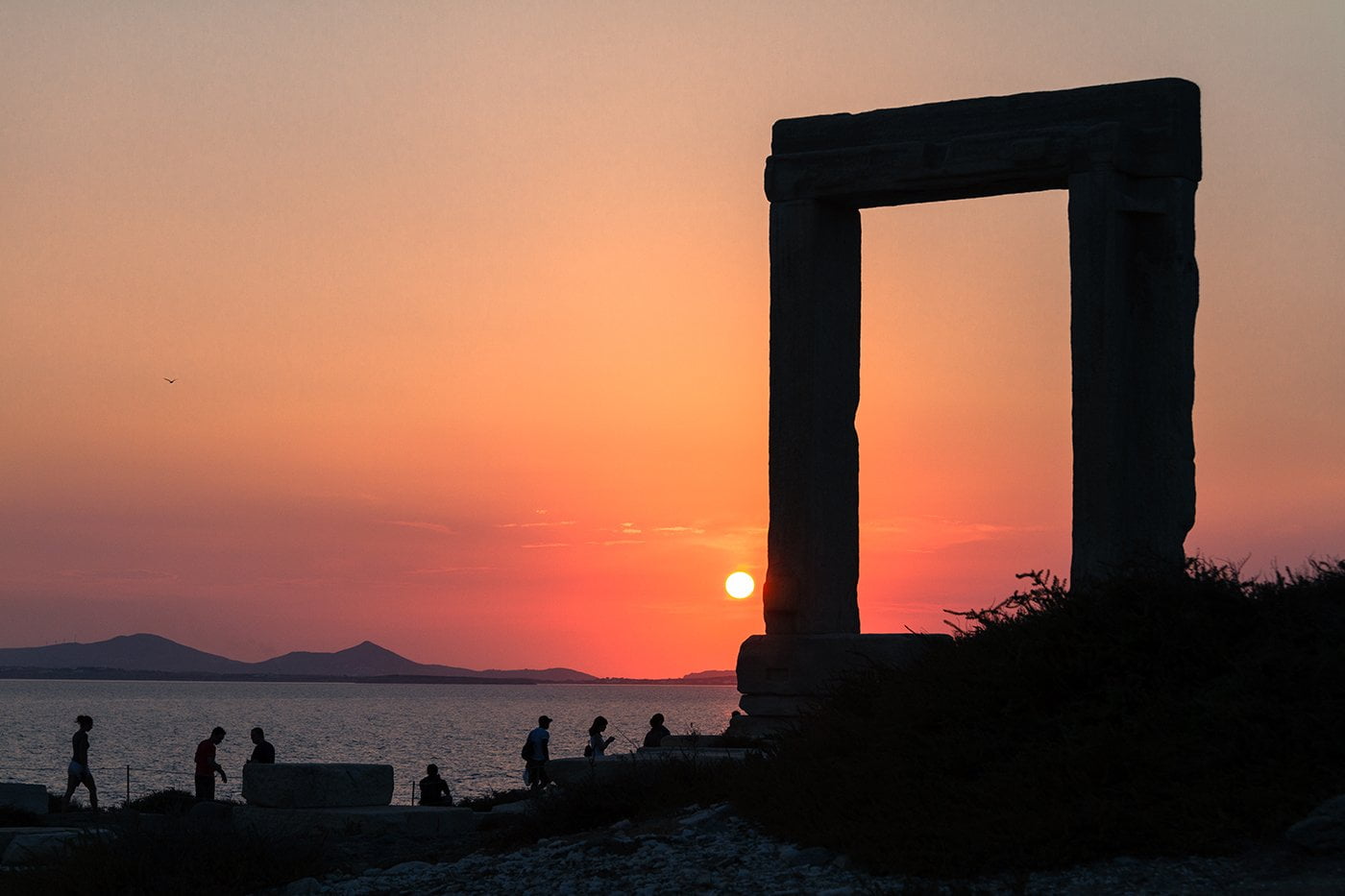
Ideally, with the sun painting it all a crimson red as it goes down in an epic sunset. At the same time, its other side offers a view of the typically Cycladic port and city of Naxos in its frame. “Portara”, as this monument is called, has also a strong mythological and historical background.
The History of Naxos
It is the only standing part of the 6th century BCE temple of Apollo, patron god of Naxos, which never got finished and, through the ages, had its pieces taken away for the building of Byzantine churches and Venetian castles. Miraculously, this huge marble gate was the only thing that was left intact and, according to myth, at the very place where god Dionysus first beheld Ariadne, daughter of Minos, and fell in love with her. As the story goes, right after Theseus killed the Minotaur in Crete they fled together, but they stopped exhausted at Naxos; Ariande got off the ship and napped right there on the beach. Dionysus saw her and told Theseus to take a hike, woke her up confessing his love to her, took her to Olympus mountain with him and favored Naxos ever since.
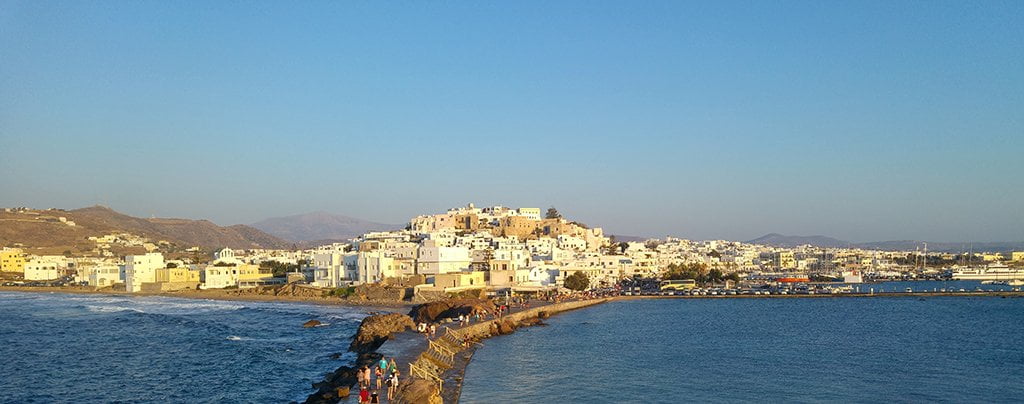
Chora of Naxos Photo Credit: Luigi Rosa
And how could he not? Less “gentrified” but equally seductive to the other more famous Cycladic islands, Naxos stands right next to them, shinning under the sun of the Aegean. The biggest island in the Cyclades archipelago resisted the trend of the neighboring islands, evading the fate of turning completely into a tourist-based economy. So, although its beauties have long been known to the outside world, the tendency of the locals to be self-sufficient through their production, kept the place more authentic and representative of the everyday local island life than Mykonos or Santorini. But the fact that Naxos has so many wonderful beaches, sites, and history made it a popular tourist destination anyway.
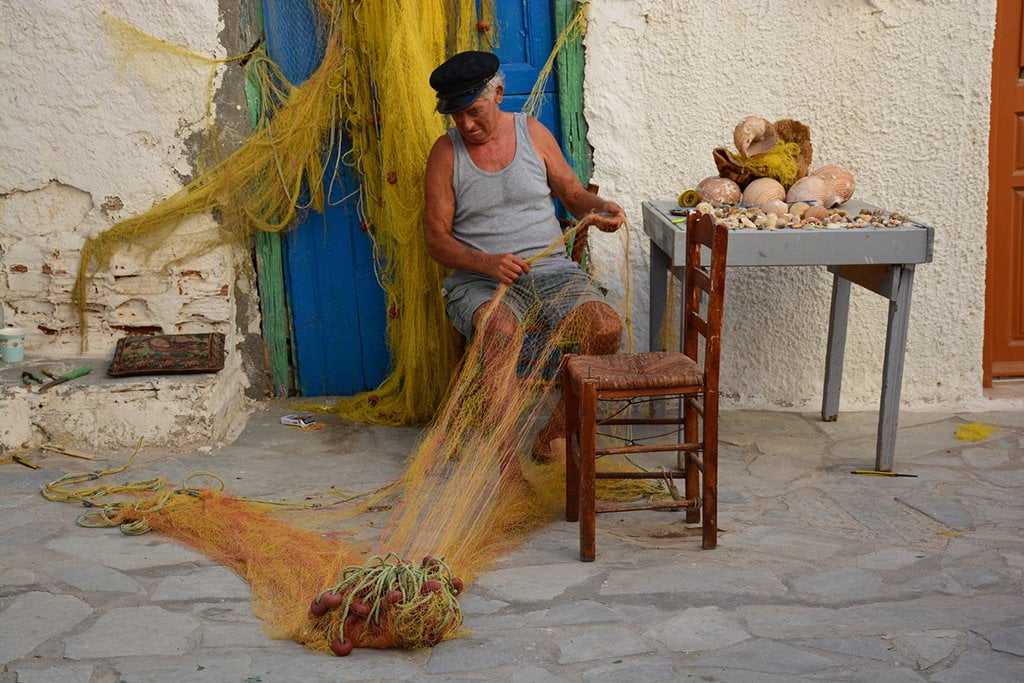
Old fisherman in Naxos Photo Credit: Paul Arps
Naxos Capital
Arriving in the island you are welcomed by the buzzing, fairytale-looking capital – or “Hora/Chora” as most island capitals in Greece are called – full of colors, sounds and smells. A labyrinthine “kastro” comprises medieval Venetian mansions, arcades, an idiosyncratic Catholic cathedral and a museum full of Cycladic figurines. The island’s monument and site list is rich and diverse: a tastefully reconstructed ancient temple of Demeter at Gyroúla; an unusual museum, housed in the private Domus Della Rocca-Barozzi, an old Venetian mansion just inside the Tráni Pórta (northwestern) gate which separates Kastro from Boúrgos; the mysterious reclining “kouroi”: huge statues made of the famous Naxos marble, idolized perfect young men, that got dumped by their ancient creators, probably because they were damaged during transportation, and now enjoy the sun lying down in Mélanes and Apóllonas; the magnificently frescoed Panagía Drosianí church, perhaps the oldest in Greece, and the wonderfully serene Fotodótis monastery.
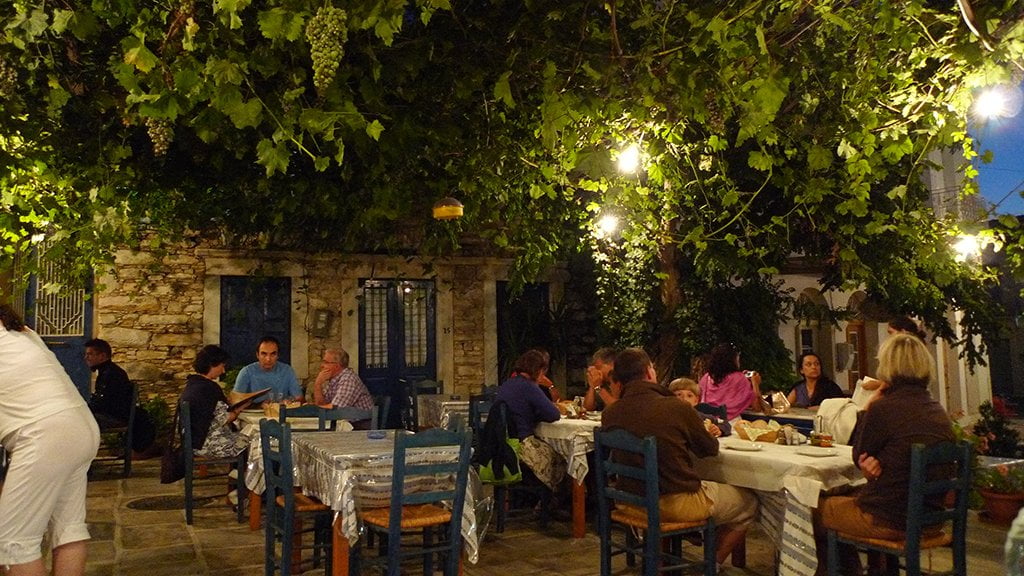
Naxos Tavern Photo Credit: John Nousis
Traditional Island
One could easily assume that the idyllic little mountain villages with the breathtaking views, the flavors of the fine Naxos wines, the famous and delicious local graviera cheese and the little local potatoes make up a more-than-adequate package, to ensure the total seduction of every visitor. Well, read on and you will find that there is much more that this island can offer.
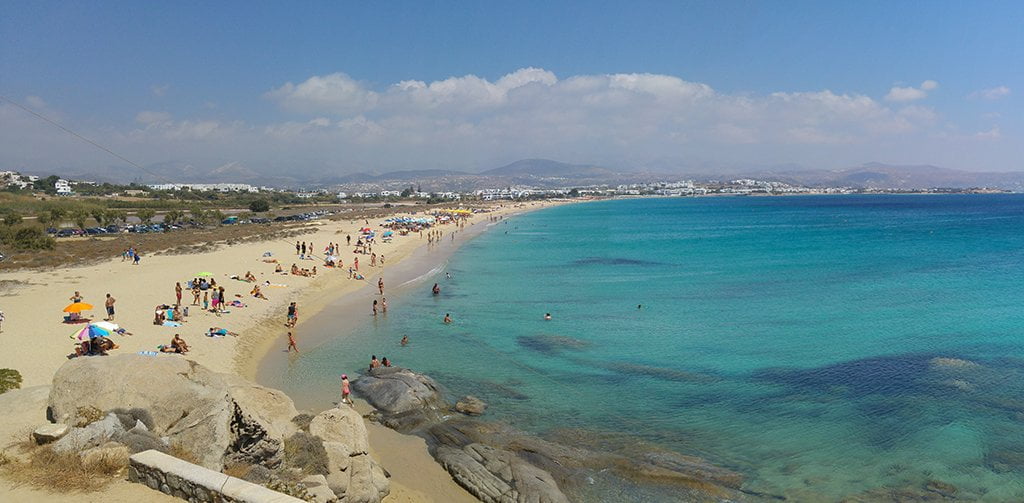
St. Prokopius Beach Photo Credit: Luigi Rosa
Naxos’s Endless Beaches
Almost half of Naxos – practically the whole eastern side, from the port of the main town, all the way to the south end and Agiassos – is a huge majestic beach broken down into smaller ones by headlands creating small bays between great stretches of sand. The waters everywhere are crystal-clear, with the typical Cycladic turquoise color. Agios Geórgios, Agia Anna, Pyrgáki and Agiassós are wide beaches with small sandy coves between them. Kalandos with its shallow calm waters at the south is more ideal for families with small children.
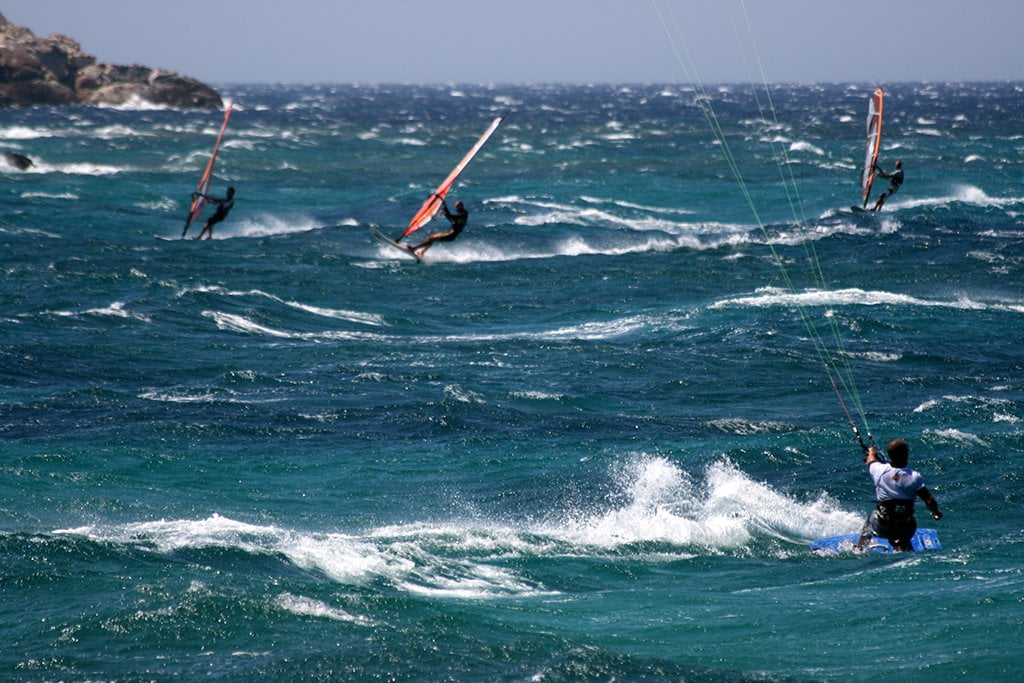
Watersports at Naxos Photo Credit: Konstantinos Petrakopoulos
Watersports at Naxos
Orkos is a Mekka for wind- and kite-surfers, as the narrow straights formed between all the neighboring islands offer constant steady winds. Mikrí Vígla is more sheltered from the northern winds and is preferred by more intermediate windsurfers and surf schools.
For those craving the experience underneath this blue surface, diving schools provide excellent tours of the seabed at Ágios Prokópios, offering a mix of cave, shipwreck and reef dives, while Kastráki and Glyfáda are ideal for beginners’ courses.

Remote beaches at Naxos Photo Credit: Konstantinos Petrakopoulos
Stunning Isolated Beaches
For those preferring isolation, rather than organized beaches with beach-bars and watersports, the island is equally generous and rewarding. The secluded sandy coves at either side of Cape Kouroúpia in the far south or the ones only a short walk’s distance off Pláka beach, are always perfect for a skinny-dip, right where nudists make their first discreet appearance in the big dunes away from civilization.
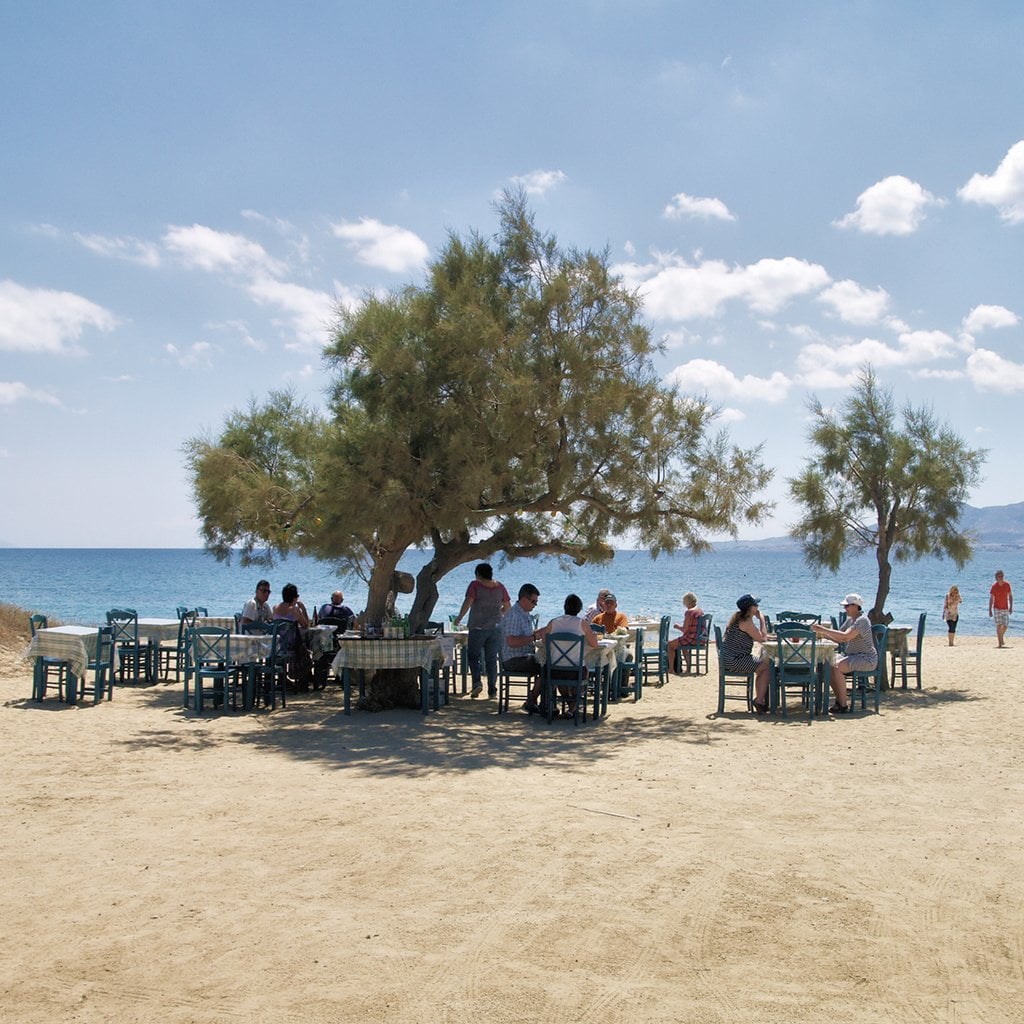
The Cycladic Experience Photo Credit: Atli Harðarson
The Perfect Cycladic Experience
All in all, Naxos can satisfy all tastes, as it offers everything one expects from a Cycladic experience, at just the right doses and with genuine authenticity.
Cover Photo Credit:TimOve
Feeling Ready?
From our blog

Discover the Best Islands in Greece to Visit This Year

How much does a honeymoon in Greece cost?

The 17 Best places to visit in Greece – 2024 Rank

Honeymoon in Crete: The Ultimate 2024 Guide for a romantic getaway

Honeymoon in Athens, Greece: The Complete Guide for Lovers of the Greek Capital

Santorini honeymoon: The Complete guide for newlyweds

Honeymoon in Mykonos: What to do and Where to Stay

Island-hopping Greece: Here’s how to do it

When is the best time to visit Greece?
